Face Detection: Color-Based
TL;DR
Different color spaces and classifiers can be used
Models: histograms, Gaussian Models, Mixture of Gaussians Model
Histogram-backprojection / Histogram matching
Bayes classifier
Discriminative Classifiers (ANN, SVM)
Bayesian classifier and ANN seem to work well
- Sufficient training data is needed for modeling the pdf, in particular for Bayesian approach (positive & negative pdfs learned)
Advantages: Fast, rotation & scale invariant, robust against occlusions
Disadvantages:
- Affected by illumination
- Cannot distinguish head and hands
- Skin-colored objects in the background problematic
Metric: ROC curve used to compare classification results / methods
Color-based face detection overview
💡 Idea: human skin has consistent color, which is distinct from many objects

Possible approach:
- Find skin colored pixels
- Group skin colored pixels
- (and apply some heuristics) to find the face
Color
- Grayscale Image: Each pixel represented by one number (typically integer between 0 and 255)
- Color image: Pixels represented by three numbers
Different representations exist –> „Color Spaces“
Color spaces
RGB
most widely used
specifies colors in terms of the primary colors red (R), green (G), and blue (B)
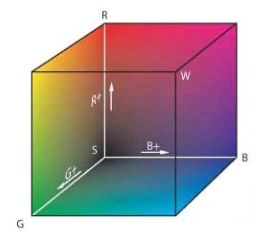
HSV/HSI: hue (H), saturation (S) and value(V)/intensity (I)
Closely related to human perception (hue, colorfulness and brightness)
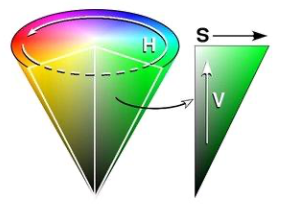
- Hue: “color”
- Saturation: How “pure” the color is?
- Value: “lightness”
Class Y spaces: YCbCr (Digital Video), YIQ (NTSC), YUV (PAL)
Y channel contains brightness, other two channels store chrominance (U=B-Y, V=R-Y)
Conversion from RGB to Yxx is a linear transformation
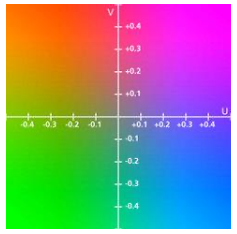
Perceptually uniform spaces
- Perceived color difference is uniform to difference in color values
- Euclidian distance can be used for color comparison
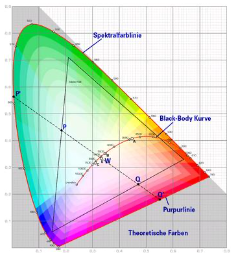
Chromatic Color Spaces
Two color channels containing chrominance (colour) information
- HS (taken from HSV)
- UV (taken from YUV)
Normalized rg from RGB:
r = R / (R+G+B)
g = G / (R+G+B)
b = B / (R+G+B)
Sometimes it is argued that chromatic skin color models are more robust
Problems
- Reflected color depends on spectrum of the light source (and properties of the object / surface)
- If the light source / illumination changes, the reflected color signal changes!!! 🤪
How to model skin color?
- Gaussian Model
- Gaussian Mixture Model
Or just learn decision boundaries between classes (discriminative model)
- ANN, SVM, …
Histogram as skin color model
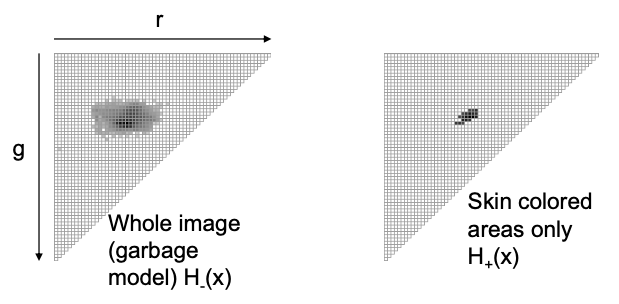
- 👍 Advantages: Works very well in practice
- 👎 Disadvantages
- Memory size quickly gets high
- A large number of labelled skin and non-skin samples is needed!
Histogram Backprojection
The simplest (and fastest) way to utilize histogram information
Each pixel in the backprojection is set to the value of the (skin-color) histogram bin indexed by the color of the respective pixel
- A color is considered as skin color if
E.g.
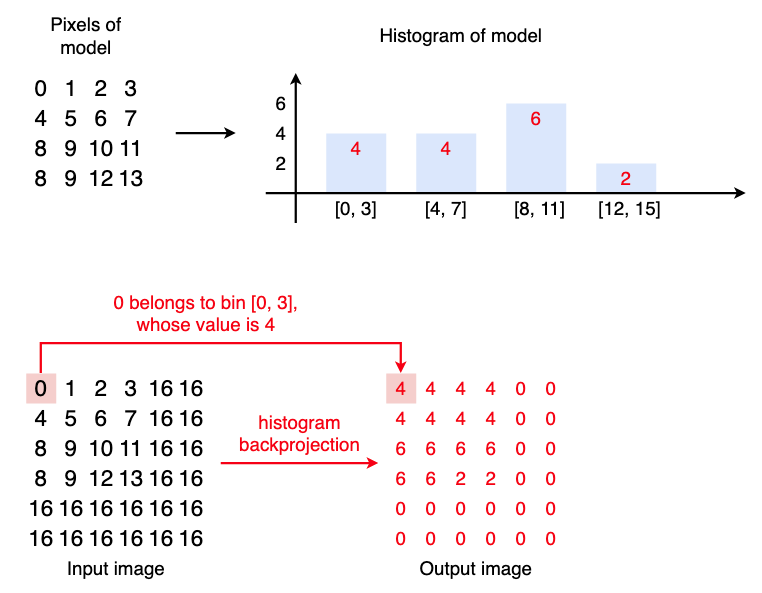
Histogram Matching
- Backprojection
- is good, when the color distribution of the target is monomodal.
- is not optimal, when the target is multi colored! 😢
- 🔧 Solution: Build a histogram of the image within the search window, and compare it to the target histogram.
- distance metrics for histograms, e.g.:
Battacharya distance
Histogram intersection
Earth-movers distance,…
- distance metrics for histograms, e.g.:
Histogram Backprojection vs. Matching
Histogram Backprojection
Compares color of a single pixel with color model
Fast and simple
Can only cope well with mono-modal distributions
sufficient for skin-color classification
Histogram Matching / Intersection
Compares color histogram of image patch with color model
Better performance
Can cope with multi-modal distributions
Computationally expensive
Parametric models
Gaussian Density Models
Gaussian Densities
Assume that the distribution of skin colors p(x) has a parametric functional form
Most common function: Gaussion function
p(x | \text{skin})=G(x ; \mu, C)=\frac{1}{(2 \pi)^{d / 2}|C|^{1 / 2} }\exp \left\\{-1 / 2(x-\mu)^{\top} C^{-1}(x-\mu)\right\\}- Mean and covariance matrix are estimated from a training set of skin colors :
- Mean and covariance matrix are estimated from a training set of skin colors :
A color is considered as skin color if
Mixture of Gaussian Models
Parameter set can be estimated using the EM algorithm
- Iteratively changes parameters so as to maximize the log-likelihood of the training set:
A color is considered as skin color if
Bayes Classifier
Skin Classification using Bayes Decision Rule
Minimum cost decision rule
Classify pixel to skin class if
Decision Rule:
The classconditionals can be estimated from the corresponding histograms:
- : count of pixels from class that have value
Discriminative Models / Classifiers
- Artificial Neural Networks
- Support Vector Machine
Performance Measures
For classification
When comparing recognition hypotheses with ground-truth annotations have to consider four cases:

More see: Evaluation
ROC (Receiver Operating Characteristic)
- Used for the task of classification
- Measures the trade-off between true positive rate and false positive rate
Each prediction hypothesis has generally an associated probability value or score
The performance values can therefore plotted into a graph for each possible score as a threshold
Example:
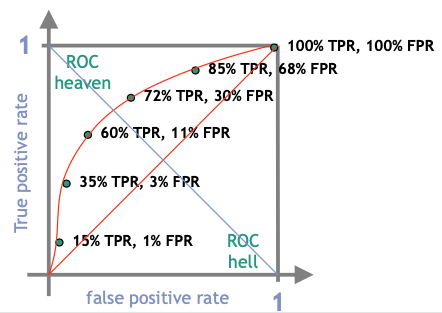
Skin-color: Analysis and Comparison
Conclusions 1
Bayesian approach and MLP worked best
- Bayesian approach needs much more memory
Approach is largely unaffected by choice of color space, but
Results degraded when only chrominance channels were used
From Skin-Colored Pixels to Faces
Skin-colored pixels need to be grouped into object representations
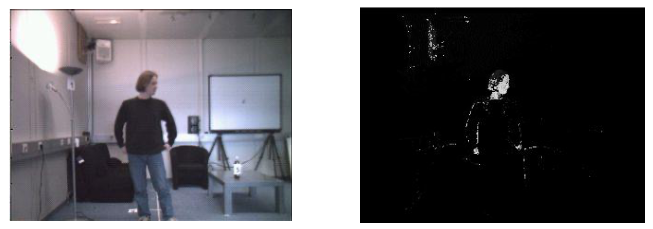
🔴 Problems:
- skin-colored background,
- further skin-colored body parts (hands, arms, …),
- Noise, …
Perceptual Grouping
Morphological Operators: Operators performing an action on shapes where the input and output is a binary image.
Threshold each pixel‘s skin affiliation –> Binary Image
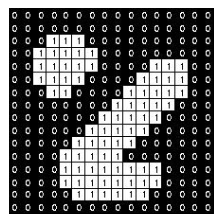
Morphological Erosion
Remove pixels from edges of objects
Set pixel value to min value of surrounding pixels

Morphological Dilatation
Add pixels to edges of objects
Set pixel value to max value of surrounding pixels
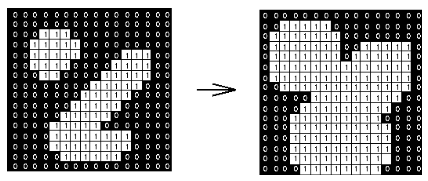
Morphological Opening
Apply erosion, then dilatation
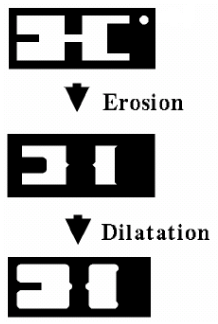
Goal:
- Smooth outline
- Open small bridges
- Eliminate outliers
Morphological Closing
Apply dilatation, then erosion
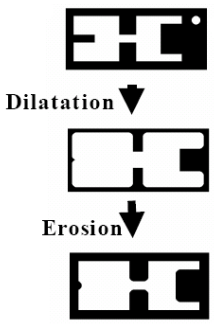
Goal:
- Smooth inner edges
- Connect small distances
- Fill unwanted holes
Apply morphological closing then morphological opening
Resulting image is reduced to connected regions of skin color (blobs)

From Skin Blobs To Faces
Goal: align bounding box around face candidate
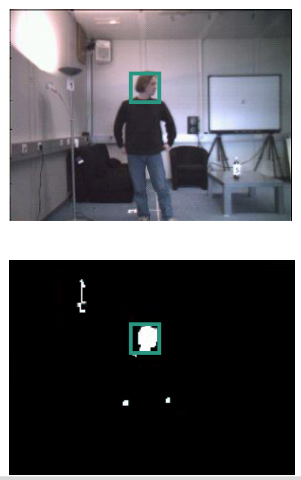
Important for:
Face Recognition
Head Pose Estimation
Different approaches:
Choose cluster with biggest size
Ellipse fitting (approximate face region by ellipse)
Heuristics to distinguish between different skin clusters
Use temporal information (tracking)
Facial Feature Detection
…
S. L. Phung, A. Bouzerdoum and D. Chai, “Skin segmentation using color pixel classification: analysis and comparison,” in IEEE Transactions on Pattern Analysis and Machine Intelligence, vol. 27, no. 1, pp. 148-154, Jan. 2005, doi: 10.1109/TPAMI.2005.17. ↩︎